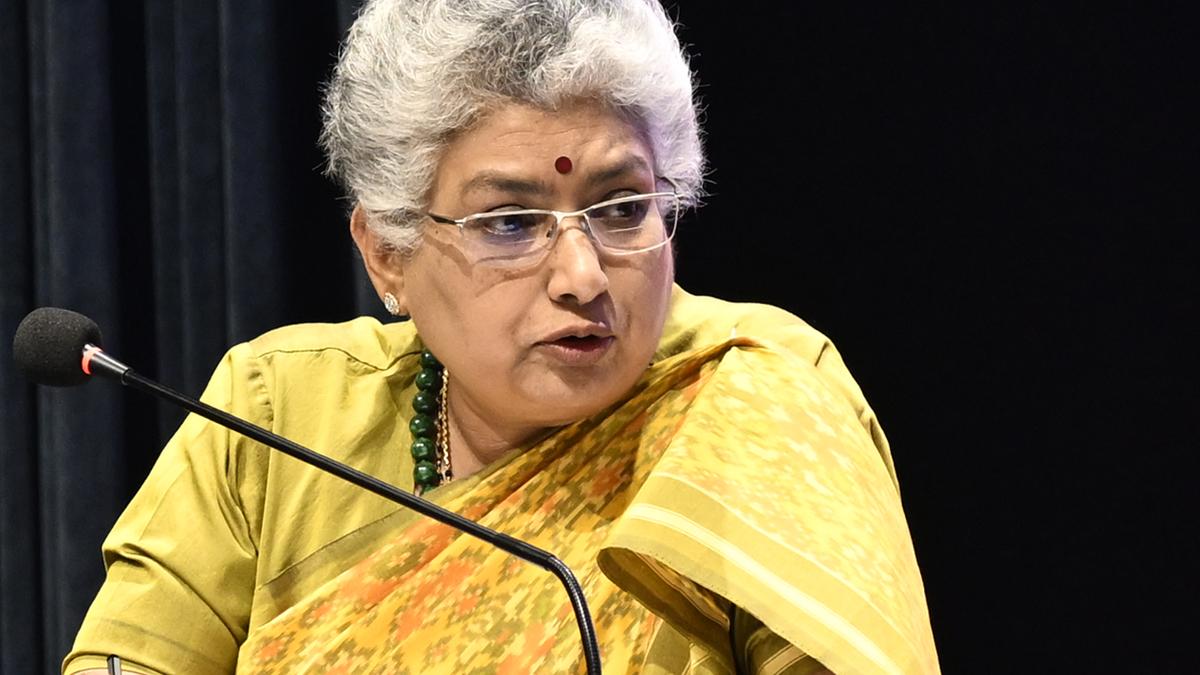News
Comprehensive Analysis of Maharashtra Elections 2024
As Maharashtra approaches the 2024 elections, the political landscape is heating up. With a rich history of electoral battles, the state’s elections are closely watched for their local impact and potential influence on national politics. This article delves into the intricacies of the upcoming Maharashtra elections, covering the historical context, major political parties, key issues, and implications for the future.
Historical Context of Maharashtra Elections
Maharashtra has a unique electoral history that reflects its socio-economic diversity and regional aspirations. The state has been a political battleground since independence, with the Indian National Congress (INC) initially dominating the scene. However, the rise of regional parties, such as the Shiv Sena and the Nationalist Congress Party (NCP), has led to a more fragmented political landscape.
Evolution of Political Dynamics
In the 1960s, the emergence of the Shiv Sena marked a significant shift. Founded by Bal Thackeray, the party championed Marathi identity and regional pride. This new wave of politics challenged the hegemony of the INC and set the stage for coalition politics in subsequent decades.
The late 1990s and early 2000s saw the rise of the NCP, founded by Sharad Pawar, which positioned itself as a defender of agrarian interests and social justice. The NCP, along with the INC, formed crucial alliances that reshaped the political scene, particularly during the 2004 and 2009 elections.
The 2024 Election Landscape
As the 2024 elections approach, several factors are shaping the political landscape in Maharashtra. The state is gearing up for assembly elections that will significantly influence the Lok Sabha elections later in the year.
Election Schedule and Preparation
The Election Commission of India has announced the election schedule, with voting expected to take place in early 2024. Preparations are underway, with parties finalizing their candidates and strategies. Voter engagement is critical this year, especially with a growing youth electorate keen on participating in the democratic process.
Key Political Parties and Their Strategies
Maharashtra’s political arena is marked by several key parties, each with distinct ideologies and electoral strategies.
Bharatiya Janata Party (BJP)
The BJP has emerged as a formidable force in Maharashtra, especially after its successful alliance with the Shiv Sena in 2014. The party’s focus on development, infrastructure, and Hindutva has resonated with a large segment of the electorate. In the lead-up to the 2024 elections, the BJP aims to consolidate its support by highlighting its achievements and promising further growth.
Shiv Sena (Uddhav Balasaheb Thackeray)
Following the split with the BJP, Uddhav Thackeray’s faction of the Shiv Sena is now focusing on regaining lost ground. The party is emphasizing its roots in regional identity and is keen on building a coalition with like-minded parties to present a united front against the BJP.
Nationalist Congress Party (NCP)
The NCP, under Sharad Pawar’s leadership, continues to play a critical role in Maharashtra politics. The party is positioning itself as a champion of farmers’ rights and social justice, aiming to attract voters disillusioned with the current government. Pawar’s experience and political acumen will be crucial in navigating the electoral landscape.
Indian National Congress (INC)
The INC is striving to regain its foothold in Maharashtra, having faced significant challenges in recent elections. The party is focusing on issues like unemployment, inflation, and social welfare to appeal to a broad base of voters. Collaborating with the NCP, the INC aims to present a strong opposition to the ruling coalition.
Major Issues Influencing the Elections
The upcoming elections will be influenced by several pressing issues that resonate with the electorate. Understanding these issues is vital for any party looking to secure votes.
Economic Concerns
Maharashtra is India’s economic powerhouse, but economic disparities persist. Key issues include unemployment, inflation, and the impact of the pandemic on local businesses. Voters are looking for concrete solutions to these problems, making economic development a central theme in election campaigns.
Agriculture and Rural Development
Agriculture remains a vital sector in Maharashtra, and the struggles of farmers are a significant concern. Issues such as crop failure, debt, and inadequate government support have led to widespread discontent. Political parties are focusing on agrarian policies to secure the rural vote.
Urban Development and Infrastructure
Urban areas in Maharashtra face challenges like housing shortages, traffic congestion, and inadequate public services. The BJP, in particular, is banking on its development agenda to attract urban voters. Infrastructure projects and smart city initiatives are likely to feature prominently in campaign rhetoric.
Social Justice and Caste Dynamics
Caste dynamics play a crucial role in Maharashtra politics. Parties are increasingly appealing to specific caste groups to secure their votes. Issues of social justice, reservation policies, and empowerment of marginalized communities are essential topics that will influence voter preferences.
The Role of Youth and Voter Engagement
With a significant proportion of the electorate being young voters, their engagement is crucial. The youth are increasingly becoming politically aware, leveraging social media and digital platforms to express their views and demands. Political parties are tailoring their campaigns to resonate with this demographic, focusing on issues like education, employment, and environmental sustainability.
Initiatives for Voter Awareness
Efforts are being made to increase voter awareness and participation. Campaigns aimed at educating voters about the electoral process and the importance of their vote are gaining traction. Political parties are also focusing on outreach programs to connect with the youth and address their concerns.
Implications of the 2024 Elections
The outcomes of the Maharashtra elections will have far-reaching implications, both for the state and for national politics.
Potential for Political Realignments
The 2024 elections could lead to significant political realignments in Maharashtra. Depending on the results, there may be shifts in alliances and coalitions, which could redefine the power dynamics in the state. The fate of the existing ruling coalition and the opposition will hinge on how well they address the key issues facing the electorate.
Influence on National Politics
As a state with a substantial number of parliamentary seats, Maharashtra’s election results will play a critical role in shaping the composition of the Lok Sabha. The performance of regional parties like the Shiv Sena and NCP will also indicate the strength of regionalism in national politics.
Conclusion
The 2024 Maharashtra elections are poised to be a pivotal moment in the state’s political history. With a complex interplay of historical legacies, socio-economic issues, and emerging political dynamics, the elections will reflect the aspirations and concerns of a diverse electorate.
As parties prepare for the electoral battle, understanding the nuances of voter sentiment and addressing pressing issues will be crucial for success. The outcome of these elections will not only determine the future of Maharashtra but will also reverberate across the national political landscape, influencing policies and governance in the years to come.
News
Supreme Court Judicial Critique and the Legacy of Justice Krishna Iyer

The Indian judicial system has long been renowned for its dedication to justice, fairness, and legal principles. Central to this system is the Supreme Court of India, a pillar of integrity where justices weigh the nation’s most pressing legal concerns. Recently, discussions have intensified around the remarks made by Chief Justice of India (CJI) concerning Justice V.R. Krishna Iyer. As one of the most influential judges in India, Krishna Iyer’s legacy continues to shape the judiciary, though not without criticism. Here, we delve into the CJI’s criticism of Krishna Iyer, examining its context, impact, and implications for judicial independence and accountability.
Understanding the Context: Supreme Court Dynamics
The Role of the Supreme Court Bench and Judiciary Dynamics
The Supreme Court functions on the foundational principle of checks and balances. Composed of a nine-judge bench, the Supreme Court’s duty is to interpret the Constitution, uphold civil liberties, and ensure the government’s actions align with legal standards. Given the diversity in judicial philosophy and interpretive approaches among justices, critical exchanges are not uncommon. However, it is rare for a Chief Justice to publicly question the approach of a former judge of such standing as Justice Krishna Iyer.
Judicial Independence: A Cornerstone of Democracy
Judicial independence remains critical to safeguarding democratic principles, preventing undue influences from swaying the course of justice. This freedom allows judges to interpret laws based on the Constitution, immune to external pressures. Any perceived attack on the legacy of a judge as notable as Justice Iyer raises concerns about institutional respect and unity within the judiciary.
Justice Krishna Iyer’s Judicial Legacy and Philosophy
Social Justice Advocate
Justice V.R. Krishna Iyer, a towering figure in Indian law, was known for his progressive judgments and advocacy for marginalized communities. He championed human rights and voiced strong opinions on social justice. His judgments sought to democratize access to justice, and he used his position to protect individual liberties, particularly for underrepresented communities.
Notable Judgments by Justice Krishna Iyer
- Maneka Gandhi v. Union of India – Justice Iyer expanded the scope of personal liberty under Article 21, a landmark interpretation that fundamentally shaped Indian jurisprudence on fundamental rights.
- Bachan Singh v. State of Punjab – In this case, Iyer’s dissent played a crucial role in capital punishment debates, promoting a reformist perspective that continues to influence judicial thinking.
- Govind v. State of Madhya Pradesh – His interpretation in this case broadened the concept of privacy rights, laying the groundwork for future privacy-related judgments.
Justice Iyer’s philosophy centered around constitutional morality, balancing individual rights with societal needs. His dissenting opinions often reflected his commitment to human dignity and egalitarian principles.
The Chief Justice’s Criticism and Its Implications
Evaluating the Criticism
The recent comments by the Chief Justice of India regarding Justice Iyer’s judgments have sparked considerable debate. This critique, which suggests that some of Iyer’s judgments may have exhibited judicial overreach or activism, raises questions about the extent to which judges should interpret the law versus strictly adhering to the letter of the Constitution.
Justice Iyer’s judgments often pushed traditional boundaries, and the CJI’s remarks reflect an ongoing debate over judicial activism. While some view activism as essential to addressing societal inequalities, others argue that it risks politicizing the judiciary.
Impact on Judicial Integrity and Public Perception
Criticizing a former justice in such a manner can influence public confidence in the judiciary. As guardians of justice, Supreme Court judges are expected to maintain collegiality and mutual respect. When a Chief Justice publicly questions a former judge’s approach, it can lead to perceptions of discord within the judiciary, potentially eroding trust in the institution’s objectivity and impartiality.
Moreover, it may impact future interpretations of Justice Iyer’s judgments, leading to re-evaluations or more conservative readings of social justice issues that he ardently championed.
Judicial Activism vs. Judicial Restraint: A Delicate Balance
What is Judicial Activism?
Judicial activism refers to judges shaping policy through their rulings, often filling in legislative gaps or interpreting laws in a manner that addresses pressing social issues. Justice Iyer epitomized this approach, believing that law should serve social welfare and human dignity. However, judicial activism has its critics who argue that it infringes on legislative authority.
Judicial Restraint: An Alternative Approach
Judicial restraint emphasizes minimal judicial interference, urging judges to interpret laws strictly according to the Constitution. Advocates argue that it maintains separation of powers and prevents the judiciary from assuming a legislative role. The CJI’s recent comments may reflect a preference for this conservative approach, valuing constitutional literalism over moral interpretation.
The Debate in Modern Context
As society progresses, so do the legal challenges that emerge. Issues such as privacy rights, digital freedoms, and gender equality require interpretations that evolve with societal norms. The judiciary is often tasked with finding a balance that addresses modern issues without overstepping its role. Justice Iyer’s activism remains relevant, reminding us that the law must adapt to changing times, while the CJI’s critique calls for caution in judicial expansion.
The Importance of Constructive Judicial Discourse
Healthy Debate Within the Judiciary
While such public criticism might seem controversial, it also underscores the value of open debate within the judiciary. Disagreements allow the judiciary to reflect on its own practices and ensure that legal interpretations remain consistent with constitutional values.
Strengthening Judicial Accountability
Criticism among judges can enhance judicial accountability, prompting judges to carefully consider the far-reaching implications of their rulings. By fostering a culture of scrutiny, the judiciary can become more self-aware and committed to its responsibility toward citizens.
Long-Term Implications for Future Judgments
The CJI’s remarks may influence how future judges approach cases, particularly those involving social justice and constitutional interpretations. Future benches may lean towards a more conservative application of law, potentially affecting the legacy of progressive judicial interpretation.
Conclusion: Upholding the Spirit of Justice in a Changing World
Justice Krishna Iyer’s contribution to the judiciary cannot be overstated. His legacy embodies a vision of inclusive justice, where the rights of individuals are safeguarded, and social equity is prioritized. The Chief Justice’s recent critique does not negate this legacy but instead highlights the judiciary’s ongoing dialogue on judicial philosophy and interpretive boundaries. For India’s judiciary to continue serving its constitutional mandate, it must find the right balance between restraint and activism—a dynamic that will ultimately shape the country’s legal landscape.
News
Reliance Jio’s 2025 IPO: A Potential Milestone in Indian Market History

Reliance Jio, one of India’s largest telecommunications giants led by Mukesh Ambani, is gearing up for an IPO (Initial Public Offering) in 2025. With a market-shaking potential, the upcoming Reliance Jio IPO is anticipated to be India’s largest IPO to date. This bold move follows the success of Reliance Jio in transforming India’s telecom and digital service landscape, and the IPO could drive substantial capital investment into the country’s fast-growing tech ecosystem.
What Sets Reliance Jio Apart?
Reliance Jio has revolutionized digital access in India. From its inception, Jio has redefined connectivity for millions, delivering affordable internet access and advanced telecommunication services. Its broad user base and cutting-edge infrastructure make it a strategic player in India’s digital growth. The brand’s 5G rollout and strong digital footprint uniquely position it to attract investors in one of the world’s most dynamic telecom markets.
The Anticipated Scale of Reliance Jio’s IPO
Jio’s IPO aims to raise billions, with reports suggesting it could exceed the size of previous major Indian IPOs. Market analysts predict the IPO may set records, given Reliance Jio’s strong market position, substantial user base, and continual expansion across digital platforms. The raised capital will likely fund further advancements, positioning Jio to expand its services and influence within and beyond the telecom industry.
Potential Impact of the Reliance Jio IPO on the Stock Market
The Jio IPO could boost investor interest in the Indian stock market, drawing both domestic and international investors. Historically, Reliance Industries’ strategic moves have impacted broader market trends, and Jio’s IPO could stimulate significant market activity, benefiting various stakeholders across sectors.
Investor Interest and Strategic Partnerships
Given its extensive user base, advanced technology, and scalable digital platforms, Reliance Jio is expected to attract interest from both institutional and retail investors. Additionally, strategic partnerships with global tech firms may enhance Jio’s appeal to investors seeking exposure to India’s growing digital economy.
How Will the IPO Strengthen Reliance Jio’s Vision?
Reliance Jio’s IPO will likely provide the capital needed to accelerate its mission of digital empowerment in India. With a robust infrastructure and an expanding 5G network, Jio is focused on leveraging its resources to enhance connectivity and digital solutions. The IPO proceeds may further support Jio’s ventures in areas like cloud services, IoT, AI, and digital content.
Preparing for an Historic Market Debut
Reliance Jio’s IPO represents not just a financial event but a significant milestone in India’s digital journey. Investors and market analysts are watching closely as the company prepares for a potential landmark IPO that could reshape both the tech and telecom landscapes.
News
Elcid Investments: A Historic Surge in Share Price

On October 29, 2024, Elcid Investments made headlines by overtaking MRF to become India’s most expensive stock. This remarkable feat was largely driven by a BSE auction aimed at price discovery for holding companies, resulting in each share of Elcid being valued at an astonishing Rs 2.25 lakh. In a dramatic twist, the smallcap stock saw its price skyrocket from a mere Rs 3.53 to an incredible Rs 2,36,250 in a single trading day—a staggering increase of 66,92,535%. Meanwhile, MRF shares closed the day at Rs 1.22 lakh, marking a 0.61% decline.
This article will delve into the factors contributing to this unprecedented rise in Elcid’s stock price, the broader implications for the Indian market, and what this means for investors and market participants.
Understanding Elcid Investments
Elcid Investments is a registered non-banking financial company (NBFC) categorized under investment companies by the Reserve Bank of India (RBI). The firm does not operate any business of its own; rather, it focuses on investments in other companies, boasting a diverse portfolio that includes significant stakes in industry giants like Asian Paints. Its primary revenue source is the dividends generated from these holdings, alongside a notable investment portfolio worth over Rs 11,000 crore.
The Role of the BSE Auction
The surge in Elcid’s share price can be attributed to a special auction conducted by the Bombay Stock Exchange (BSE) on October 28, 2024. This auction was part of a broader initiative spearheaded by the Securities and Exchange Board of India (SEBI) to enhance price discovery mechanisms for investment companies (ICs) and investment holding companies (IHCs).
Historically, many of these firms traded significantly below their book values, creating a disconnect between market perception and underlying asset values. To rectify this, SEBI introduced a framework for “special call auctions with no price bands,” designed to improve liquidity and investor interest in these stocks. The auction resulted in a price discovery that set the opening price for Elcid at Rs 2.25 lakh on October 29, a value still considered below its intrinsic book value.
The Market Reaction
The announcement of Elcid’s new price immediately sparked interest and disbelief among market participants. Social media platforms, particularly X (formerly Twitter), became abuzz with reactions as traders and investors processed the shocking leap in valuation. Many expressed astonishment at the rapid transformation of Elcid from a low-priced stock to one of the most valuable in the market.
This dramatic rise raises critical questions about valuation methodologies and market behavior. Investors often look for indicators of a stock’s worth, including earnings reports, dividend yields, and market sentiment. The BSE auction method, particularly one without price bands, is relatively new and brings both opportunities and risks.
Financial Performance and Growth
Elcid’s financial performance has shown promise, particularly in the June quarter of 2024. The company reported a net profit of Rs 135.95 crore, reflecting a substantial increase of 39.57% from Rs 97.41 crore in the same period the previous year. Additionally, net sales were recorded at Rs 177.53 crore, a 38.28% growth compared to Rs 128.38 crore in June 2023.
Such robust financial metrics, combined with the company’s extensive investment portfolio, play a crucial role in its newfound valuation. As Elcid continues to receive dividends from its various investments, its financial health appears to be on a strong upward trajectory.
Investment Implications
The meteoric rise of Elcid Investments offers several lessons and implications for investors:
- Volatility and Speculation: The sheer scale of Elcid’s price movement underscores the volatility that can occur in the stock market, especially with smallcap stocks. While such dramatic increases can yield significant short-term profits, they also carry substantial risks. Investors must conduct thorough due diligence before entering the market, especially in cases of extreme price volatility.
- Value Investing vs. Speculative Trading: The disparity between Elcid’s auction price and its book value invites discussions about value investing versus speculative trading. While some investors may seek to capitalize on rapid price changes, others may prefer to invest based on long-term fundamentals and intrinsic value.
- Regulatory Influence: SEBI’s intervention in price discovery showcases the importance of regulatory frameworks in maintaining fair market practices. The auction method could be a model for future initiatives aimed at improving liquidity and investor confidence in various sectors.
- Portfolio Diversification: Elcid’s focus on investments in established companies like Asian Paints serves as a reminder of the benefits of diversification. Investors are encouraged to spread their investments across different sectors to mitigate risks associated with individual stocks.
The Future of Elcid Investments
With its recent price surge, Elcid Investments has positioned itself as a significant player in the Indian stock market. However, sustaining such a high valuation will depend on several factors, including continued performance of its investments, market conditions, and regulatory developments.
As of now, the company’s valuation is still below its book value, indicating potential for further upside if it continues to grow its investment portfolio effectively. The company’s approach to managing its holdings and generating returns through dividends will be closely monitored by investors.
Broader Market Implications
Elcid’s rapid ascent is not just a story of one company’s success; it reflects broader trends in the Indian market. The dramatic shifts in stock prices serve as a reminder of the potential for sudden changes in investor sentiment, which can lead to equally rapid declines as seen in many speculative bubbles.
Furthermore, Elcid’s rise may encourage other smallcap and midcap companies to reevaluate their pricing strategies and consider engaging in similar price discovery auctions. This could lead to a more dynamic market landscape, where the focus shifts toward more transparent and fair pricing mechanisms.
Conclusion
Elcid Investments’ phenomenal journey from obscurity to becoming India’s most expensive stock exemplifies the unpredictable nature of the stock market. It highlights the importance of regulatory frameworks in shaping market dynamics and investor behavior. While the company’s recent financial performance has been encouraging, the future remains uncertain as it navigates the complexities of the market.
Investors and market participants must remain vigilant, recognizing the inherent risks and opportunities presented by such volatile stocks. As Elcid continues to make waves on Dalal Street, its story serves as both an inspiration and a cautionary tale for those looking to make their mark in the world of finance.

 Celebrity2 months ago
Celebrity2 months agoKim D’Estainville: A Brief Biography of a Distinguished Media Executive

 Celebrity2 months ago
Celebrity2 months agoWho is Josh Gates’ Daughter? A Look Into the Family Life of the Famous Explorer

 Celebrity3 months ago
Celebrity3 months agoSamay Raina Biography

 Celebrity4 months ago
Celebrity4 months agoLove Kataria Biography

 Celebrity2 months ago
Celebrity2 months agoMikki Mase Net Worth 2024: The Rise of a Gambling Maverick

 Sports3 months ago
Sports3 months agoSimone Biles Biography

 Celebrity3 months ago
Celebrity3 months agoLeAnn Rimes to Shake Things Up at “The Voice Australia” 2024

 Celebrity2 months ago
Celebrity2 months agoDDG Net Worth: The Rise of a YouTube Star-Turned Rapper
















